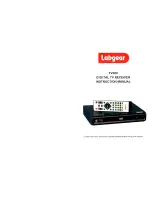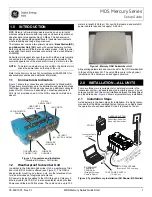
1
QUICK GUIDE TO ALIGNMENT OF TJ2B
(
For kits shipped after 16 June, 2013
)
Modification:
R62 – 680 ohm resistor; D18 – 100 ohm +1N4007, i.e.., parallel a 100 ohm resistor
across 1N4007; RFC 4 – 56 ohm resistor; RFC 5 – TDK miniature inductor
Detailed DDS Setup please refer to the Construction Guide. However, when calibrating DDS
clock, use 100Hz step, and rotate TUNE until the frequency counter reading is flashing between
11.999999 and 12.000000 for more precise DDS output.
1. Calibrating BFO and IF Transformer
With the 7-wire and the 2-wire speaker cables connected, turn on the power. You don’t have
to connect the LO cable and the 2-wire MIC now. The MIC wire is not very long, and would limit
the PCB movement. Why not use longer cable for MIC? Long MIC wire would pick up noise and
interference and cause multi-function. Select LSB. Connect the frequency counter probe to the left
side of C40. Insert a 470-ohm resistor between the test point and the probe to minimize the pulling
.
The resistor value is not critical, 220 – 1k is OK. Adjust L2 until the frequency is 8.99840 MHz.
Select USB, and adjust VC1 until the reading is 2.8kHz higher than that of LSB, i.e., 9.0012MHz.
You may find that at LSB the L2 slug is almost out, but the frequency is lower than 8.99840 MHz.
Don’t worry. This means this group of crystals has a lower center frequency. Please adjust L2 until
the frequency is 8.99800 MHz, and the USB frequency is 9.00080 MHz. In this case, you have to
modify SETUP again. Press SETUP, and enter IF Setup. Modify -1600 to -2000.
Now, adjust the 10k trimmer on CN2 until D4 is the brightest. Rotate AF GAIN to increase
the volume. Adjust the slug of T4 and listen carefully. You may find a point at which the hiss
sound is the loudest, i.e., to peak the hiss sound.
Solder the DDS LO cable to CN1. Connect the antenna to the BNC connector of TJ2B, You
can immediately hear the noise coming form the sky. Rotate TUNE, you can hear broadcast and
ham signals.
2. Calibrating IF Trap
Rotate TUNE to reach 8.99800MHz. Use 100KHz step first and then use 10KHz or 1KHz
step. 100KHz step makes the tuning faster since TJ2B has no band switch foe simplicity. At this
frequency there is usually no broadcast signal. Let’s make use of the noise from the sky. Adjust L3,
until the received noise is the weakest, -- not to peak the received signal this time, but to suppress
the received the signal. Now, L3 is done.
3. Testing Transmission
Plug in CN4. Assemble the power transistor assembly (with the aluminum plate). Solder the
power transistor leads. Never try to test transmission without the aluminum plate. The power
transistor would be damaged immediately without the aluminum plate. First set the frequency to
40m. Press PTT, and you may notice the needle of your power meter moves forward a little, i.e., a
jump, and quickly returns. This indicates the TX unit works! Speak to MIC, the power meter
needle swings merrily. Please remember, because of the inertia of the meter needle, the reading
can not follow the speech pattern. The reading may be much lower, maybe half the power, i.e., a 2
Watt reading may indicate 4 Watts.



















